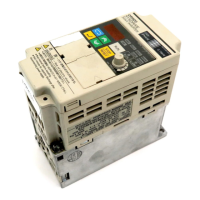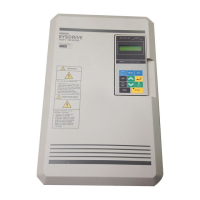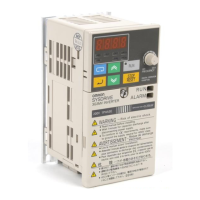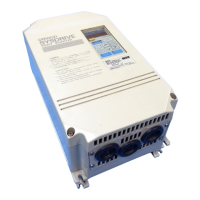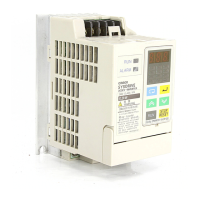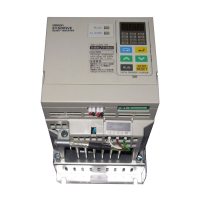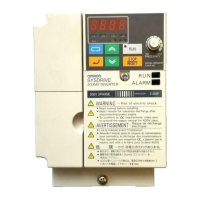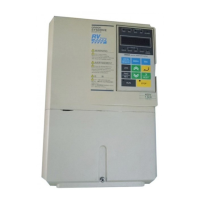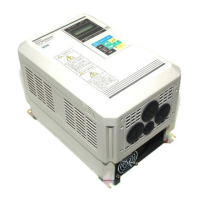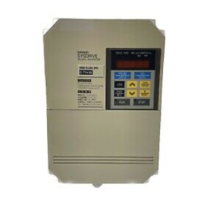7-4
Fault
display
Probable cause and remedyFault name and
meaning
%l1 Motor overload (OL1)
The electric thermal relay
actuated the motor
overload protective
function.
•The load is excessive.
→ Reduce the load.
→ Decrease the Inverter capacity.
•The V/f setting is incorrect.
→ Reduce the V/f set voltage.
•The value in n11 for maximum voltage frequency
is low.
→ Check the motor nameplate and set n11 to the
rated frequency.
•The acceleration/deceleration time is too short.
→ Increase the acceleration/deceleration time.
•The value in n32 for rated motor current is incor-
rect.
→ Check the motor nameplate and set n32 to the
rated current.
•The Inverter is driving more than one motor.
→ Disable the motor overload detection function
and install an electronic thermal relay for each
of the motors.
The motor overload detection function is
disabled by setting n32 to 0.0 or n33 to 2.
•The motor protective time setting in n34 is short.
→ Set n34 to 8 (the default value).
%l2 Inverter overload (OL2)
The electronic thermal
relay has actuated the
Inverter overload
protective function.
•The load is excessive.
→ Reduce the load.
•The V/f setting is incorrect.
→ Reduce the V/f set voltage.
•The acceleration/deceleration time is too short.
→ Increase the acceleration/deceleration time.
•The Inverter capacity is insufficient.
→ Use an Inverter model with a higher capacity.
Maintenance Operations Chapter
7

